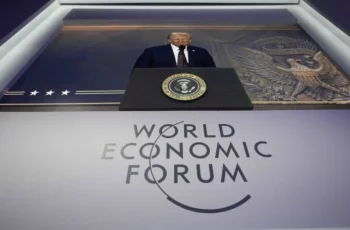
The most that Poland might gain is remaining in the US’ good graces in the hope it’ll at least retain its troops there instead of curtail them like some have reported it might do, but the trade-off is that Poland might fall further out of the EU’s good graces and thus widen intra-bloc rifts.
Trump recently proposed in a social media post that NATO impose 50-100% tariffs on China as part of his latest plan for ending the Ukrainian Conflict. His reference to NATO likely alludes to the obligation that he believes that its European members have to follow the US’ policy towards Russia, including the aforesaid proposal vis-à-vis China, due to its role as the bloc’s leader. While none of them will likely comply, Poland’s closure of the Belarusian border still de facto amounts to the imposition of slight tariffs.
Publicly funded TVP reported that “Closure of Poland’s border with Belarus derails €25 billion Chinese export route”, which they estimated to constitute 3.7% of bilateral trade, with the 1.6% growth from last year driven by Chinese e-commerce exports to the EU given reduced shipping times compared to sea. The increased costs associated with this move, both in terms of cost and time, will therefore have a minimal impact on trade but it might still be noticeable in that sector if the border remains closed.
About that, the pretext upon which Poland justified its decision was this month’s Zapad 2025 drills between Russia and Belarus in the second-mentioned country, with the associated announcement coming right before last week’s reported Russian drone incursion into Poland. The heightened NATO-Russian tensions that followed raise the chances that Poland might keep the Belarusian border closed indefinitely for political reasons but possibly per a speculatively undisclosed understanding with the US.
New President Karol Nawrocki visited Trump in early September, during which time the latter confirmed that the US will retain its ~10,000 troops in Poland and might even deploy more there. It’s possible that this was the result of a quid pro quo whereby Poland agreed to close the border with Belarus for slight de facto EU tariff purposes in exchange for the aforesaid. Secretary of War Pete Hegseth described Poland as the US’ “model ally” in February so it’s not unreasonable that they’d discuss such a deal.
Poland is one of the most hawkish NATO/EU countries towards Russia and thus presumably sympathizes with Trump’s proposal for them to impose 50-100% tariffs on China as part of his plan for ending the Ukrainian Conflict, however, it also fears the possibly crippling economic consequences. It therefore makes sense for Poland to only force slight de facto EU tariffs on China by closing the Belarusian border on “plausible security pretexts” that don’t provoke retaliation from Beijing but still send it a message.
That message was conveyed as diplomatically as possible after their Foreign Ministers met in Warsaw on Monday and it was then confirmed that they indeed discussed Belarus, et al. China then committed to working closer with Poland on resolving the Ukrainian Conflict, but this probably won’t translate into meaningful pressure on Russia. That’s because the political-strategic costs of ruining their trusted ties through these means far outweigh the economic benefit of resuming trade with the EU via Belarus.
Seeing as how Europe isn’t expected to comply with Trump’s proposal due to how economically self-defeating it would be, Poland’s closure of the Belarusian border is only an insignificant non-tariff barrier to a fraction of Sino-EU trade. The most that Poland might gain is remaining in the US’ good graces in the hope it’ll at least retain its troops there instead of curtail them like some have reported it might do, but the trade-off is that Poland might fall further out of the EU’s good graces and thus widen intra-bloc rifts.
Source: author’s blog










Comments